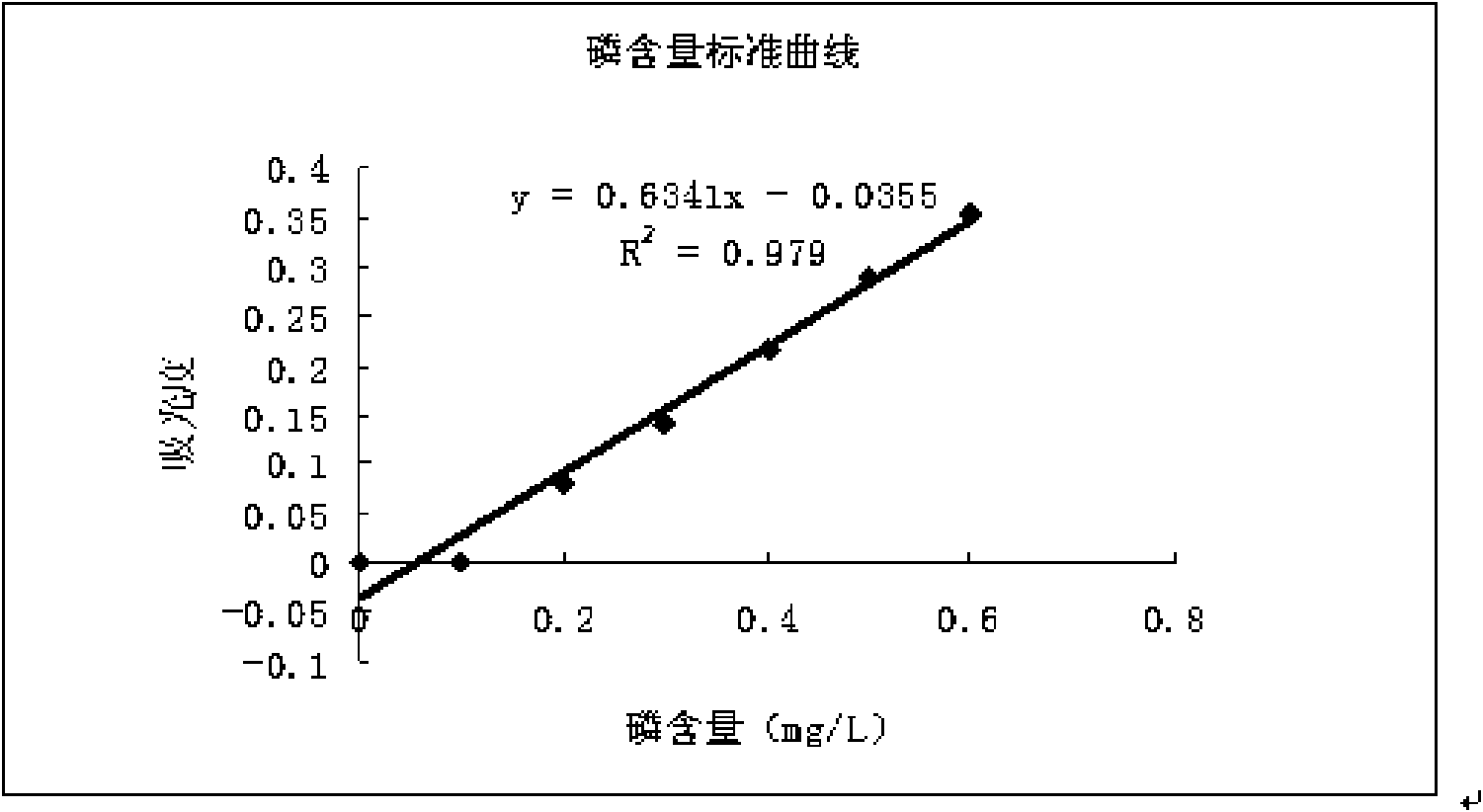Analysis method for fast detecting degradation rate of organophosphorus degrading bacteria
An analysis method, organophosphorus technology, is applied in the direction of material analysis by observing the influence of chemical indicators, and analysis by making materials undergo chemical reactions, which can solve problems such as long duration, need for pretreatment, and complicated operation process. Achieve the effect of simple instrument, low cost and easy operation
- Summary
- Abstract
- Description
- Claims
- Application Information
AI Technical Summary
Problems solved by technology
Method used
Image
Examples
Embodiment 1
[0014] 1) The organophosphate-degrading strain Bacillus megaterium was inserted into the dichlorvos-inorganic salt medium with an inoculum volume of 10%, wherein the concentration of dichlorvos was 200 mg / L (the total phosphorus concentration was 28.0 mg / L). Cultivate at 30°C and 180r / min for 48h.
[0015] 2) The supernatant obtained by centrifuging the fermentation broth at 8° C. at 6000 r / min for 30 min is the sample solution to be tested in the present invention.
[0016] 3) Draw 5mL of the sample solution to be tested, add 0.1-0.2mL dinitrophenol indicator, then dilute it with water in a 50mL volumetric flask, then add 5% by volume sulfuric acid solution to adjust the solution until it is slightly yellow. Accurately add 5mL molybdenum antimony anti-color agent, shake well, add water to make up volume. At room temperature, let stand for 30min to develop color. Put the color-developed sample solution on the spectrophotometer, use a 700nm, 1cm optical path cuvette, and use ...
Embodiment 2
[0020] 1) The organophosphate-degrading strain Microbacterium oxidans was inserted into the dichlorvos-inorganic salt medium with a volume ratio of 5% inoculum, wherein the concentration of phoxim was 400 mg / L (total phosphorus concentration was 41.6 mg / L). Cultivate at 30°C and 180r / min for 24h.
[0021] 2) The supernatant obtained by centrifuging the fermentation broth at 8° C. at 6000 r / min for 20 minutes is the sample solution to be tested in the present invention.
[0022] 3) Draw 2.5mL of the sample solution to be tested, add 0.05-0.1mL dinitrophenol indicator, then dilute it with water in a 50mL volumetric flask, and then add 10% volume percent sodium carbonate solution to adjust the solution until it is slightly yellow . Accurately add 5mL molybdenum antimony anti-color agent, shake well, add water to make up volume. At room temperature, stand for 20min to develop color. Put the color-developed sample solution on the spectrophotometer, use a 700nm, 1cm optical path ...
PUM
 Login to View More
Login to View More Abstract
Description
Claims
Application Information
 Login to View More
Login to View More - R&D
- Intellectual Property
- Life Sciences
- Materials
- Tech Scout
- Unparalleled Data Quality
- Higher Quality Content
- 60% Fewer Hallucinations
Browse by: Latest US Patents, China's latest patents, Technical Efficacy Thesaurus, Application Domain, Technology Topic, Popular Technical Reports.
© 2025 PatSnap. All rights reserved.Legal|Privacy policy|Modern Slavery Act Transparency Statement|Sitemap|About US| Contact US: help@patsnap.com

